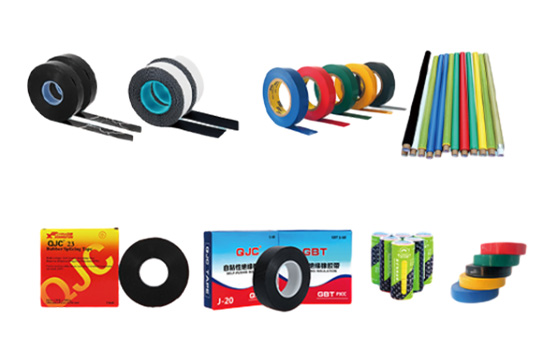Self-Adhesive Rubber Insulation A Comprehensive Overview
In modern construction and industrial applications, the need for efficient insulation materials has never been greater. Among these materials, self-adhesive rubber insulation stands out as a versatile and highly effective solution. This article delves into the composition, benefits, applications, and installation techniques associated with self-adhesive rubber insulation.
What is Self-Adhesive Rubber Insulation?
Self-adhesive rubber insulation is a type of insulation material made from closed-cell rubber. It is designed to provide thermal and acoustic insulation while also being resistant to moisture and environmental factors. The self-adhesive feature allows for easy application, as the material comes with an adhesive backing that enables it to bond securely to various substrates without the need for additional adhesives.
Composition and Properties
The primary component of self-adhesive rubber insulation is synthetic rubber, which is known for its durability and elasticity. This material is often combined with a range of additives that enhance its resistance to aging, UV radiation, and extreme temperatures. The closed-cell structure of the rubber makes it an effective barrier against thermal loss and condensation, maximizing energy efficiency.
Notable properties of self-adhesive rubber insulation include
1. Thermal Resistance It provides excellent thermal insulation, which helps maintain desired temperatures within buildings and equipment. 2. Acoustic Insulation The density of the rubber also offers sound-dampening qualities, making it ideal for environments where noise reduction is essential. 3. Moisture Resistance Its closed-cell design prevents water ingress, minimizing the risk of mold and mildew, which is crucial in humid climates. 4. Ease of Installation The self-adhesive backing simplifies the installation process, reducing labor costs and time.
Benefits of Self-Adhesive Rubber Insulation
1. Energy Efficiency By minimizing heat loss or gain, self-adhesive rubber insulation significantly reduces energy consumption. This is particularly beneficial for heating, ventilation, and air conditioning (HVAC) systems, leading to lower utility bills.
2. Versatility This insulation can be applied to a variety of surfaces and in multiple applications, including pipes, ducts, and walls. Its adaptability makes it suitable for both residential and commercial buildings.
3. Cost-Effectiveness Although the initial investment in high-quality self-adhesive rubber insulation may be higher than some traditional materials, its longevity and performance can lead to substantial savings over time.
4. Environmental Friendliness Many self-adhesive rubber insulation products are designed to be environmentally friendly, with some being made from recycled materials and others having minimal environmental impact during their lifecycle.
self adhesive rubber insulation

Applications
Self-adhesive rubber insulation is utilized across various sectors
- HVAC Systems It is commonly used to insulate ducts and pipes, helping maintain the efficiency of heating and cooling systems. - Industrial Applications In factories and manufacturing plants, it protects equipment and pipes from heat loss and condensation. - Building Insulation It can also be applied to walls and ceilings in residential and commercial buildings, enhancing overall energy efficiency.
- Automotive Industry The insulation is used for soundproofing and thermal insulation in vehicles, improving passenger comfort.
Installation Techniques
Installing self-adhesive rubber insulation is a straightforward process
1. Surface Preparation Ensure that the surface is clean, dry, and free of dust or grease to facilitate optimal adhesion.
2. Measuring and Cutting Measure the area to be insulated and cut the rubber insulation to the appropriate size. A sharp utility knife is often used for clean cuts.
3. Peeling and Applying Peel away the protective backing and carefully place the insulation onto the surface. Press firmly to ensure a strong bond.
4. Sealing Joints In areas where multiple pieces meet, it’s essential to seal the joints to maintain insulation integrity.
Conclusion
Self-adhesive rubber insulation presents a remarkable solution for modern insulation needs, combining efficiency, durability, and ease of use. As industries and homeowners alike strive for better energy solutions, this insulation material proves itself to be an invaluable asset. Through its multifaceted applications and robust performance, self-adhesive rubber insulation is poised to remain a key player in the insulation landscape for years to come.
-
XIANGFAN Rubber Tape-Ultimate Solutions for All Your Insulation NeedsNewsJun.24,2025
-
XIANGFAN Rubber Tape-Protection for Industrial and Residential ApplicationsNewsJun.24,2025
-
XIANGFAN Rubber Tape: Superior Safety and Sealing for Demanding EnvironmentsNewsJun.24,2025
-
XIANGFAN Rubber Tape: Reliable Solutions for Every Electrical ChallengeNewsJun.24,2025
-
XIANGFAN Electrical & Industrial Tape: Powering Reliability Across IndustriesNewsJun.24,2025
-
XIANGFAN Electrical & Industrial Tape: Excellence in Every ApplicationNewsJun.24,2025
